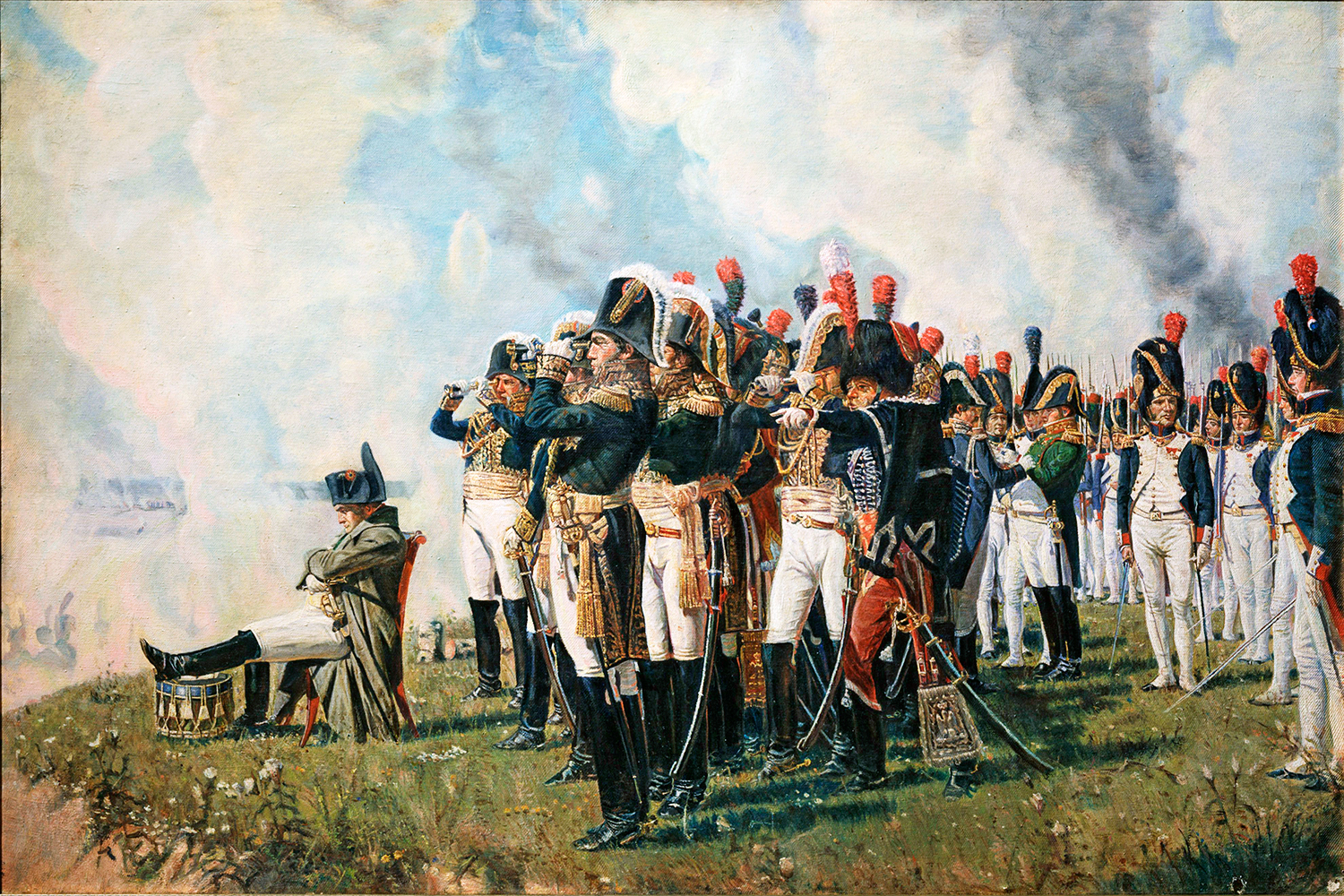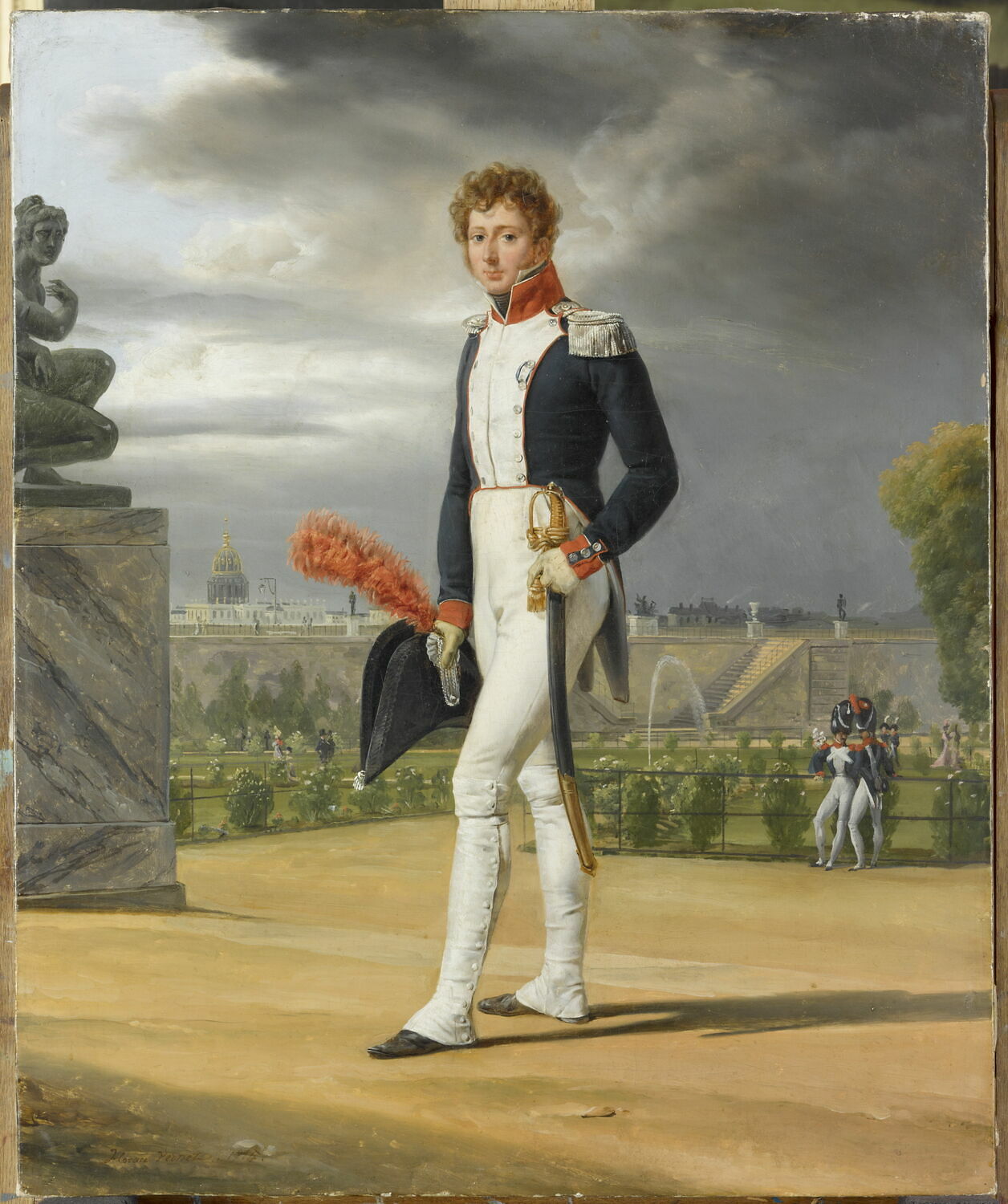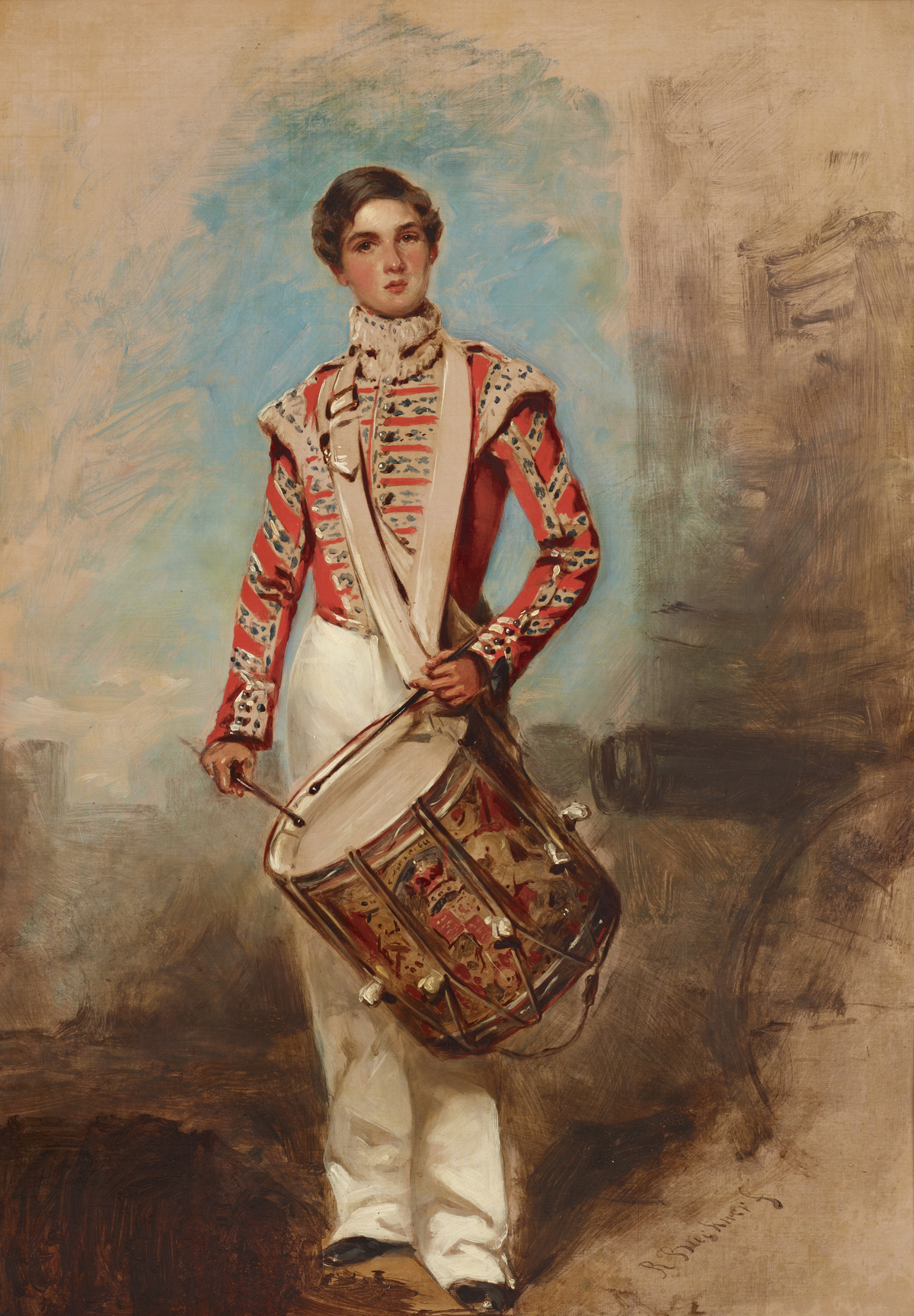|
Claude Perrin Victor
Claude-Victor Perrin, Duke of Belluno (; 7 December 1764 – 1 March 1841) was a French military commander who served during the French Revolutionary Wars and the Napoleonic Wars. He was made a Marshal of the Empire in 1807 by Emperor Napoleon I. Early life Victor was born in Lamarche on 7 December 1764 to Charles Perrin and Marie Anne Floriot. In 1781, he enlisted in an artillery regiment in Grenoble as a drummer, and after ten years' service he applied for and received his discharge. In Valence, on 16 May 1791 he married Jeanne Josephine Muguet, by whom he had issue which was extinct in the male line by 1917. French Revolutionary Wars War of the First Coalition In February 1792, Victor joined his hometown's National Guard as a grenadier. He then enlisted in the 1st Drôme Battalion, and later passed to the 5th Bouches-du-Rhône Battalion. In September 1792 he was made chief of battalion and deployed with the Army of Italy, distinguishing himself at the Battle of ... [...More Info...] [...Related Items...] OR: [Wikipedia] [Google] [Baidu] |
Marshal Of The Empire
Marshal of the Empire () was a civil dignity during the First French Empire. It was established by on 18 May 1804 and to a large extent reinstated the formerly abolished title of Marshal of France. According to the ''Sénatus-consulte'', a Marshal was a grand officer of the Empire, entitled to a high-standing position at the court and to the presidency of an electoral college. Although in theory reserved "to the most distinguished generals", in practice Emperor of the French, Emperor Napoleon granted the title according to his own wishes and convictions and made at least a few controversial choices. Although not a military rank, a Marshal displayed four silver stars, while the top military rank, General of Division, displayed three stars. Furthermore, the Marshalate quickly became the prestigious sign of the supreme military attainment and it became customary that the most significant commands be given to a Marshal. Each Marshal held his own coat of arms, was entitled to specia ... [...More Info...] [...Related Items...] OR: [Wikipedia] [Google] [Baidu] |
French Revolutionary Wars
The French Revolutionary Wars () were a series of sweeping military conflicts resulting from the French Revolution that lasted from 1792 until 1802. They pitted French First Republic, France against Kingdom of Great Britain, Great Britain, Habsburg monarchy, Austria, Kingdom of Prussia, Prussia, Russian Empire, Russia, and several other countries. The wars are divided into two periods: the War of the First Coalition (1792–1797) and the War of the Second Coalition (1798–1802). Initially confined to Europe, the fighting gradually assumed a global dimension. After a decade of constant warfare and aggressive diplomacy, France had conquered territories in the Italian peninsula, the Low Countries, and the Rhineland with its very large and powerful military which had been totally mobilized for war against most of Europe with mass conscription of the vast French population. French success in these conflicts ensured military occupation and the spread of revolutionary principles over mu ... [...More Info...] [...Related Items...] OR: [Wikipedia] [Google] [Baidu] |
Coaraze
Coaraze (; ; ) is a commune in the Alpes-Maritimes department in the Provence-Alpes-Côte d'Azur region in southeastern France. Geography Coaraze is a small village in the Nice hinterland, in the valley of the River Paillon. The closest town is Contes, away. The village itself is built on a sandstone mount at the foot of Mount Férion (1,414 metres or high). History Erected as a ''baronnie'' in 1629, Coaraze was under Spanish administration from 1744 to 1748. In the nineteenth century the old trail was replaced by a road. Population Its inhabitants are called ''Coaraziens'' in French. Tourism Coaraze is one of sixteen villages grouped together by the Métropole Nice Côte d'Azur tourist department as the ''Route des Villages Perchés'' (Route of Perched Villages). The others are: Aspremont, Carros, Castagniers, Colomars, Duranus, Èze, Falicon, La Gaude, Lantosque, Levens, La Roquette-sur-Var, Saint-Blaise, Saint-Jeannet, Tourrette-Levens and Utelle. Coaraze i ... [...More Info...] [...Related Items...] OR: [Wikipedia] [Google] [Baidu] |
Army Of Italy (France)
The Army of Italy () was a field army of the French Army stationed on the Italian border and used for operations in Italy itself. It is best known for its role during the French Revolutionary Wars (in which it was one of the early commands of Napoleon Bonaparte, during his Italian campaign) and Napoleonic Wars. History Bonaparte's reforms Poorly supplied (uniforms and shoes were rare), and only getting reinforcements irregularly, the Army of Italy was sometimes reduced to looting to survive. When Bonaparte arrived (he took up command on 27 March 1796), indiscipline was rife. Chouan songs were sung by the troops, and a company of the Dauphin was formed. All the while improving the supply system as much as possible, Bonaparte also reestablished discipline. He condemned officers who had cried ''Vive le roi !'', (English: "Live the king!"), dismissed the 13th regiment of hussards for indiscipline and dissolved an entire regiment when it revolted at the end of March. Purge ... [...More Info...] [...Related Items...] OR: [Wikipedia] [Google] [Baidu] |
Bouches-du-Rhône
Bouches-du-Rhône ( ; , ; ; "the Mouths of the Rhône") is a Departments of France, department in southern France. It borders Vaucluse to the north, Gard to the west and Var (department), Var to the east. The Mediterranean Sea lies to the south. Its Prefectures in France, prefecture and largest city is Marseille; other important cities include Aix-en-Provence, Arles, Martigues and Aubagne. Marseille, France's second-largest city, has one of the largest Containerization, container ports in the country. It prides itself on being France's oldest city, founded by Greek settlers from Phocaea around 600 BC. Bouches-du-Rhône is the most populous department of the Provence-Alpes-Côte d'Azur Regions of France, region, with 2,043,110 inhabitants as of 2019.Populations légales 2019: 13 Bouches-du-Rhône< ... [...More Info...] [...Related Items...] OR: [Wikipedia] [Google] [Baidu] |
Drôme
Drôme (; Occitan: ''Droma''; Arpitan: ''Drôma'') is the southernmost department in the Auvergne-Rhône-Alpes region of Southeastern France. Named after the river Drôme, it had a population of 516,762 as of 2019.Populations légales 2019: 26 Drôme INSEE Drôme's is Valence. History Saint-Vallier in Drôme was the birthplace of one of France's most famous courtesans, the noble-born[...More Info...] [...Related Items...] OR: [Wikipedia] [Google] [Baidu] |
Grenadier
A grenadier ( , ; derived from the word ''grenade'') was historically an assault-specialist soldier who threw hand grenades in siege operation battles. The distinct combat function of the grenadier was established in the mid-17th century, when grenadiers were recruited from among the strongest and largest soldiers. By the 18th century, the grenadier dedicated to throwing hand grenades had become a less necessary specialist, yet in battle, the grenadiers were the physically robust soldiers who led vanguard assaults, such as storming fortifications in the course of siege warfare. Certain countries such as France ( Grenadiers à Cheval de la Garde Impériale) and Argentina ( Regiment of Mounted Grenadiers) established units of Horse Grenadiers, and for a time the British Army had Horse Grenadier Guards. Like their infantry grenadier counterparts, these horse-mounted soldiers were chosen for their size and strength (heavy cavalry). In modern warfare, a grenadier is a specially tr ... [...More Info...] [...Related Items...] OR: [Wikipedia] [Google] [Baidu] |
National Guard (France)
The National Guard () is a French military, gendarmerie, and police reserve force, active in its current form since 2016 but originally founded in 1789 during the French Revolution. It was founded as separate from the French Army and existed both for policing and as a military reserve. However, in its original stages from 1792 to 1795, the National Guard was perceived as revolutionary and the lower ranks were identified with sans-culottes. It experienced a period of official dissolution from 1827 to 1830 but was reestablished. Soon after the Franco-Prussian War of 1870–71, the National Guard in Paris again became viewed as dangerously revolutionary, which contributed to its dissolution in 1871. In 2016, France announced the reestablishment of the National Guard for the second time, in response to a series of terrorist attacks in the country. Creation The raising of a "Bourgeois Guard" (''"garde bourgeoise"'') for Paris was discussed by the National Assembly on 11 Jul ... [...More Info...] [...Related Items...] OR: [Wikipedia] [Google] [Baidu] |
Valence, Drôme
Valence (, ; ) is a Communes of France, commune in southeastern France, the prefecture of the Drôme Departments of France, department and within the Auvergne-Rhône-Alpes Regions of France, region. It is situated on the left bank of the Rhône, about south of Lyon, along the railway line that runs from Paris to Marseille. It is the eighth-largest city in the region by its population and has 64,726 registered inhabitants in 2018 (132,556 inhabitants in the urban area (''unité urbaine''). The city is divided into four Cantons of the Drôme department, cantons. Located in the heart of the Vallée du Rhône (France), Rhone corridor, Valence is often referred to as "the door to the South of France", the local saying ''à Valence le Midi commence'' ("at Valence the Midi begins") pays tribute to the city's southern culture. Between Vercors Massif, Vercors and Provence, its geographical location attracts many tourists. Axes of transport and communications are the A7 autoroute, A7 ... [...More Info...] [...Related Items...] OR: [Wikipedia] [Google] [Baidu] |
Drummer (military)
Drummers are military personnel whose Military specialism, specialism is playing military drums. Drums were part of the battlefield for hundreds of years, first seen by the Chinese, and then introduced to Europe by the Ottomans. With the professionalization of armies, military music was developed as well. Drums were used for the men to march in step and were also an important part of the battlefield communications system, with various drum rudiments being used to signal different commands from officers to troops. By the second half of the 18th century, most (if not all) Western armies had a standardized set of marches and signals to be played, often accompanied by fifers. The idea of the "Drummer Boy" The romantic idea about drummers is that they were young boys (for instance the Christmas carol "The Little Drummer Boy", or the painting "Steady the Drums and Fifes"). Drummers were more often adult men, recruited like the common soldiers. Fifers, on the other hand, being not an off ... [...More Info...] [...Related Items...] OR: [Wikipedia] [Google] [Baidu] |
Grenoble
Grenoble ( ; ; or ; or ) is the Prefectures in France, prefecture and List of communes in France with over 20,000 inhabitants, largest city of the Isère Departments of France, department in the Auvergne-Rhône-Alpes Regions of France, region of southeastern France. It was the capital of the Dauphiné Provinces of France, historical province and lies where the river Drac (river), Drac flows into the Isère (river), Isère at the foot of the French Alps. The population of the Communes of France, commune of Grenoble was 158,198 as of 2019, while the population of the Grenoble metropolitan area (French: or ) was 714,799 which makes it the largest metropolis in the Alps, ahead of Innsbruck and Bolzano.Comparateur de territoire INSEE A significant European scientific centre, [...More Info...] [...Related Items...] OR: [Wikipedia] [Google] [Baidu] |






